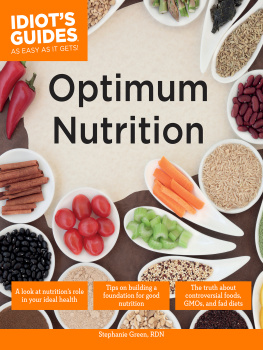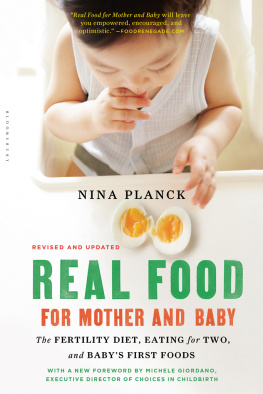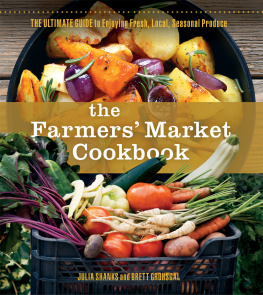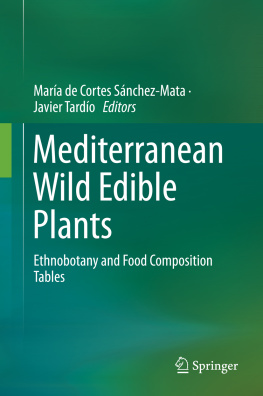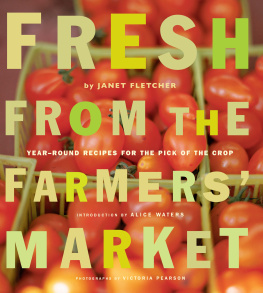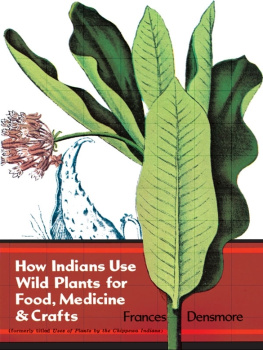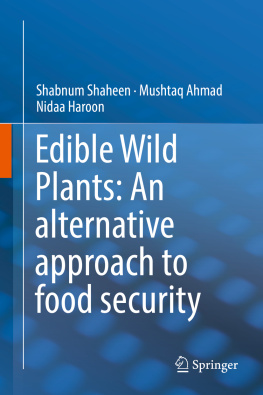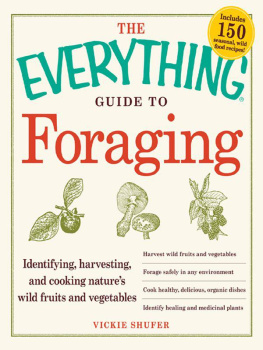Unwittingly, as we went about breeding more palatable fruits and vegetables, we were stripping away some of the very nutrients we now know to be essential for optimum health. Compared with wild fruits and vegetables, most of our man-made varieties are markedly lower in vitamins, minerals, and essential fatty acids. A wild plant called purslane has six times more vitamin E than spinach and fourteen times more omega-3 fatty acids. It has seven times more beta-carotene than carrots.
Most native plants are also higher in protein and fiber and much lower in sugar than the ones weve devised. The ancestor of our modern corn is a grass plant called teosinte that is native to central Mexico. Its kernels are about 30 percent protein and 2 percent sugar. Old-fashioned sweet corn is 4 percent protein and 10 percent sugar. Some of the newest varieties of supersweet corn are as high as 40 percent sugar. Eating corn this sweet can have the same impact on your blood sugar as eating a Snickers candy bar or a cake doughnut.
Today, most health experts agree that the most healthful diet is one that is high in fiber and low in sugar and rapidly digested carbohydrates. This regimen is referred to as a low-glycemic diet because it helps keep our blood glucose at optimum levels. A low-glycemic diet has been linked to a reduced risk of cancer, cardiovascular disease, chronic inflammation, obesity, and diabetesour five modern scourges. Wild fruits and vegetables are the original low-glycemic foods.
A DRAMATIC LOSS OF PHYTONUTRIENTS
Within the past two decades, plant scientists around the world have discovered another major difference between wild plants and our modern varieties: the plants that nature made are much higher in polyphenols, or phytonutrients. (In this book, I will use the terms phytonutrients and bionutrients interchangeably. Phyton is the Greek word for plant.) Plants cant fight their enemies or hide from them, so they protect themselves by producing an arsenal of chemical compounds that protect them from insects, disease, damaging ultraviolet light, inclement weather, and browsing animals.
More than eight thousand different phytonutrients have been identified to date, and each plant produces several hundred of them. Many of the compounds function as potent antioxidants. When we consume plants that contain high amounts of bioavailable antioxidants, we get added protection against noxious particles called free radicals that can inflame our artery linings, turn normal cells cancerous, damage our eyesight, increase our risk of becoming obese and diabetic, and intensify the visible signs of aging. Other phytonutrients are involved in the communication between our cells, and yet others alter our genes. A number of small-scale studies have shown that select bionutrients in plants can also enhance athletic performance, reduce the risk of infection, fight the flu, lower blood pressure, lower LDL cholesterol, speed up weight loss, protect the aging brain, improve mood, and boost immunity.
Because of these many potential health benefits, phytonutrients have become one of the hottest new areas of research. More than thirty thousand scientific papers have been published on the topic since the year 2000. Some of the research has been appearing in the popular press. Many health-conscious consumers can now talk knowledgeably about the resveratrol in red wine, the lycopene in tomatoes, and the anthocyanins in blueberries. The nutraceutical industry has been quick to capitalize on the research. Browse the Internet and you will find thousands of high-priced pills, energy bars, juice drinks, and powders that contain phytonutrient extracts. Have you had your lycopene capsule today?
If we were still eating wild plants, there would be no need for these supplements. One species of wild tomato, for example, has fifteen times more lycopene than the typical supermarket tomato. Some of the native potatoes that grow in the foothills of the Andes have twenty-eight times more phytonutrients than our russet potatoes. One species of wild apple that grows in Nepal has an amazing one hundred times more bionutrients than our most popular apples; just a few ounces of the fruit provide the same amount of phytonutrients as six large Fujis or Galas.
AN APPLE A DAY DID NOT KEEP THE DOCTOR AWAY
Remarkably, some varieties of produce in our supermarkets are so relatively low in phytonutrients and high in sugar that they can aggravate our health problems, not alleviate them. In an eye-opening study that took place in 2009, forty-six overweight men with high cholesterol and triglycerides agreed to participate in an eating experiment. Twenty-three of the men stayed on their regular diets and served as a control group; the other twenty-three men added one Golden Delicious apple to their daily fare. The goal of the project was to see if eating more fruit would reduce the mens high risk of cardiovascular disease. At the end of the two-month study, the researchers measured the blood fats of both groups of men and compared the results with tests that had been taken when the study began. To the researchers surprise, the men who had eaten an apple a day had higher levels of triglycerides and LDL cholesterol than they had at the beginning of the study, giving them an


